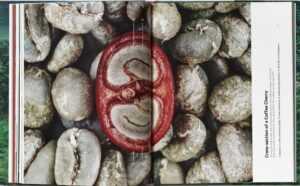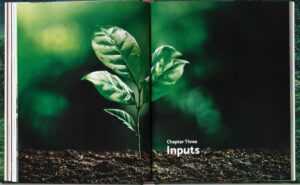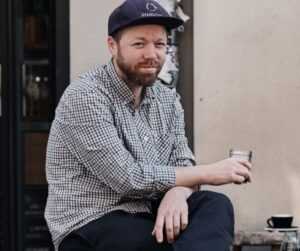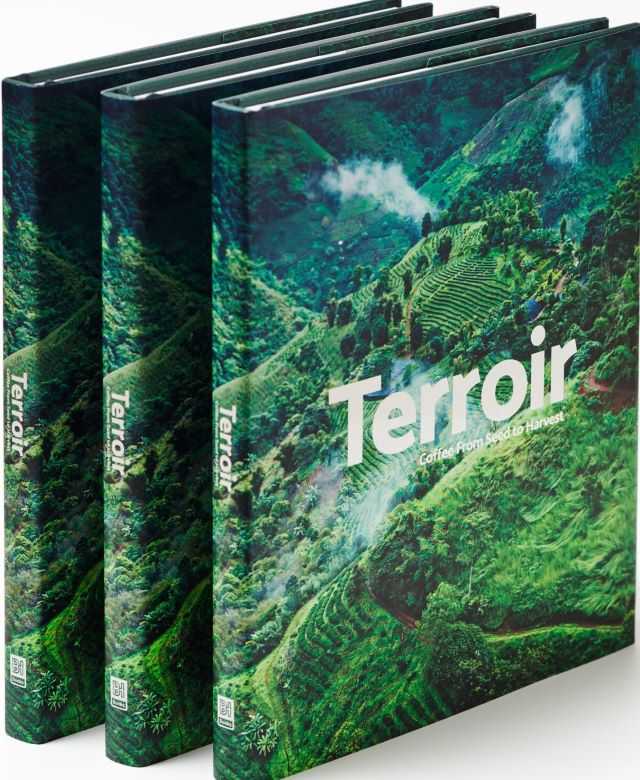MILAN – Jeremy Challender, we’ve already known him here, is UK Brewers Cup Champion, WCE Sensory Judge, co-founder of Prufrock Coffee, the dean of studies at Barista Hustle and now also author of Terroir — Coffee from Seed to Harvest.‘’
A book that, as the title already suggests, analyses the origins from a chemical, botanical point of view, also through the voices of several of the protagonists of this part of the chain.
Genotype and territory (understood as a set of factors such as the characteristics of the soil and local climate, the altitude at which the coffee is grown) are the keys to understanding the birth of the speciality, starting from its place of origin par excellence: Ethiopia.
Challender is not alone in this voyage of discovery of the universe behind the green bean (of which we on the other side of the chain normally only see the finished product):
together with experts such as Tim Wendelboe, Hanna Neuschwander, Willem Boot, Graciano Cruz, and Anabella Meneses, Challender completes the mosaic with testimonies from the field, literally.
So if you are looking for a textbook that can deepen your knowledge with respect to growing and producing your own cup of coffee, this is what you are looking for. Climate change, plant disease, problems with bean growth – between shade and light – are no longer just words, but phenomena that can be read, because they are well explained by Challender.
We asked him to further explain some of the salient points that struck our first reading of Terroir

First of all, the title: the word terroir is used a lot when talking about wine but you chose it as the title of the book on the specialty coffee. This connection between the two worlds is not exactly new. Why did you insist on this aspect?
Challender: “We asked Getu Bekele to write a foreword for this book and he did a great job of explaining why a book with this title and focus is timely for our industry. He said,
‘Although the concept of terroir is highly advanced in the wine industry, little is known about it in the coffee sector … This book is the first to thoroughly discuss the coffee plant in connection with the main building blocks of terroir.’ ”
How much time did you have to dedicate to complete this complex book?
Challender: “We’ve certainly discovered, making a reference book like this is a marathon, not a sprint. The research; fact-checking; writing and editing; plus the complexity and meticulousness the layout requires all made Terroir a labour intensive process. It took us two years to get to that moment where we knew everything in the book was accurate, flowed nicely, and looked awesome.”
The book goes into a lot of detail, including the chemical-botanical details of the plant and the bean: is this information useful in different ways for all the operators along the chain, from the grower to the bartender?

“The information in Terroir is pertinent to both baristas and producers. Many of the environmental factors that affect a coffee plant in its lifetime, such as the elevation at which it grows, are impossible to alter. But others, such as soil nutrition, can be altered. The book unpacks all those variations for the reader. Whether you are a barista, a producer, or a consumer, the book is written to show you how terroir determines the character of a coffee and the success of a crop. It offers an overview of the factors you can control and the steps you can take to support a sustainable coffee crop and to produce a great-tasting cup.”
In Terroir, you also had the opportunity to meet with various personalities who gave their input on various topics: did you discover new things? Why did you also decide to structure the volume by introducing the form of these short interviews?
” Ever since I first became a barista in 2002, something that has struck me is the rich culture of sharing in the coffee world. In those early days of the third wave, ‘secret blends’ quickly disappeared and many myths were busted. Thankfully the ‘smoke and mirrors’ you used to see behind the bar was replaced by something bigger — the specialty coffee movement — which brought baristas like me into contact with producers and agronomists for the first time. Suddenly, everyone was listening to each other.
The interviews with Getu Bekele, Willem Boot, Graciano Cruz, Marta Dalton, Leonardo Henao, Anabella Meneses, Hanna Neuschwander, Luiz Roberto Saldanha, and Tim Wendelboe are in the book because those folks have always generously shared their knowledge with us. And for all that wisdom and experience they possess, every one of those people is on a mission to learn from everyone else. ”
If you were to answer the question: why read Terroir?

Challender concludes: “Anyone who is looking to gain a better understanding of the environmental factors which affect the development of a coffee plant; anyone wanting a clearer picture of the finances of farm management and how aspects of terroir can affect a plant’s shape and size, should read this book. ”
You can find to buy Terroir, here.


















